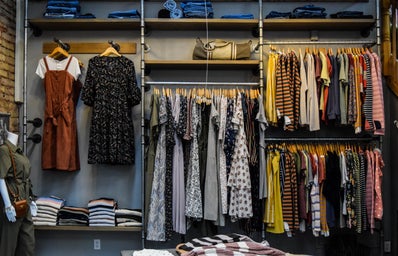This is a sponsored feature. All opinions are 100% from Her Campus.
SCIENCE OF UNDERSTANDING LUXURY CONSUMER BEHAVIOUR
Because each of us views luxury in a different way, how do we segment the luxury consumer? We can rank consumers based on annual spending, but is the annual spending enough to predict which products consumers are going to buy and which brands they will gravitate to?
In drastically changing luxury market, with consumers from different walks of life and vacillating demands, analyzing them solely on the bases of annual spending is not enough. Determination of the consumers` annual spending is vital when a brand is attempting to penetrate a new market or diversify product portfolio in order to understand the pricing parity of the market. However, today`s consumer expects much more than the materialistic aspect of luxury products, instead they are seeking for experiences. Luxury consumers tend to be part of a small social class, and they often have the biggest influence on buying behaviors which creates a revolving mechanism where brands seek their endorsement and can proudly claim they are distinguished “luxury”. Majority of the brands or start-ups assume that only financially strong consumers want to purchase luxury products, but they are overlooking the fact that there are other groups of people who have the potential to purchase luxury offerings, for example millennials with increasing financial power. A stereotypical luxury customer who is elite, sophisticated and supper affluent in the society could buy a limited edition/ vintage Chanel jacket. At the same time, you have millennial fashion influencer, aspiring, working, educated on trends who is saving up to buy the same product. They are both customers of the brand, despite varying annual income.
Geographically, gender, age groups, lifestyle, income can differentiate segments of the consumers of the luxury market. What if we push it a bit further? Data is driving force in the development of future media and products. Eye-tracking technologies focus groups, web-based platforms gathering data from us even down to listening with our phones to key words while we are in conversation. Can market segments be divided into words used? Or can they be found with sizing? Could the market be made by professions?
The evolution of luxury market and increased consumer awareness has led to the opening of newer segments like travel, wearable technology, homeware, kitchen appliances and portable electronics etc. However, classification through lifestyles is subjective and can vary across different cultures and countries. There are many factors that influence consumers’ perceived values, motivations and beliefs about products. In terms of population size, the increasing consumers’ tendency to buy luxury goods and the existence of affluent people. It is important for brands to know why consumers buy luxury, what they believe luxury is and how their perceptions of luxury value affect their decision-making process. Therefore, it is essential for marketers to identify and profile consumer segments based on various perimeters including interests, behavior and beliefs etc. With the understanding of consumers’ value perception of luxury products, it is possible to cluster them into groups for luxury market segmentation and apply suitable market strategies for each segment.
Another essential aspect is discerning what is important for the target market when it comes to luxury goods. Common buying persuaders include Luxury Value Dimensions, financial being the first one. The second is functional dimension which focuses on the core benefits of the product. This factor contains elements from the perceived uniqueness and the perceived quality as well. The third dimension is the individual dimension consumers’ personal point of reference towards luxury consumption as well as addressing personal value. The last dimension is the social dimension which reflects the perceived value of consumers towards the luxury products within a social group. It is good if annual spending can predict which products consumers buy to segment them which is exactly deciding whether a customer, he/she can afford a brand or not, but many consumers value self-identity followed by quality. These consumers don’t buy luxury based on other’s opinions or show off with luxuries. Many of them do not believe that luxury is unique an do not differentiate from others purchasing luxury goods. The annual spending/ ranking consumers might give a negative effect on these rational consumers.
Annual spending is not enough to segment the consumers, but it is a good start. By distinguishing based on annual income, the spending habits of each segment can be tracked. Next would be looking at the most common brands purchased from each segment to really get a good idea of what newer brands or trends that segment will gravitate to in the future. Brands could then use this information to target a specific segment.


